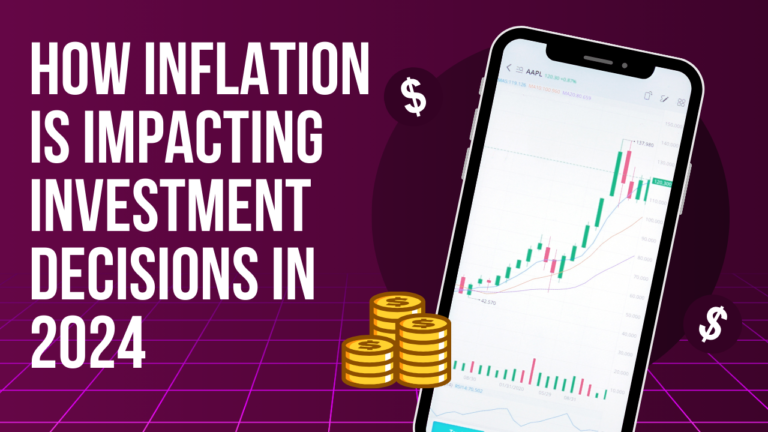In today’s unpredictable financial landscape, the phrase “don’t put all your eggs in one basket” has never been more relevant. Market volatility can send even seasoned investors into a tailspin, leaving them questioning their strategies and decisions. If you’ve ever wondered whether it is important to diversify your investments—whether through platforms like Brainly or Quizlet—you’re not alone. The truth is, diversification isn’t just a buzzword; it’s a fundamental principle of sound investing.
Imagine navigating through turbulent waters without a life jacket. That’s what relying on a single investment feels like during market downturns. By spreading your investments across various asset classes, sectors, and geographic regions, you create a safety net that cushions against unforeseen shocks. This blog will delve deep into why diversifying is essential for anyone looking to safeguard their financial future while maximizing growth opportunities amidst uncertainty. Let’s explore the ins and outs of creating an effective diversification strategy tailored to withstand the test of time—and market fluctuations alike!
Understanding Diversification
Diversification is the practice of spreading your investments across different assets to reduce risk. Instead of investing heavily in one stock or sector, diversification encourages a balanced approach.
Think of it as building a safety net. When one investment underperforms, others may thrive, cushioning potential losses. This strategy applies not only to stocks but also bonds, real estate, and even commodities.
Many investors mistakenly believe that diversification means simply owning multiple stocks. In reality, true diversification encompasses various asset classes and regions. This broadens exposure and minimizes dependency on any single market movement.
Investing in volatility indexes can be part of this mix too. These instruments react differently than traditional equities during turbulent times, providing additional stability when needed most. A well-diversified portfolio aligns with individual risk tolerance while aiming for long-term growth amidst uncertainty.
The Benefits of Diversification in a Volatile Market
Diversification acts as a safety net in unpredictable market conditions. When one investment falters, others may thrive, balancing potential losses.
By spreading investments across various asset classes—stocks, bonds, and real estate—you reduce the impact of volatility on your overall portfolio. This strategy allows you to capture gains from different sectors while minimizing risk.
Moreover, diversification can enhance returns over time. As certain assets perform well during specific economic cycles, they contribute positively to your portfolio’s growth.
Investing across geographic regions adds another layer of protection against localized downturns. A diverse international exposure can mitigate risks posed by national economic challenges.
Diversifying helps investors stay calm during turbulent times. Knowing that not all eggs are in one basket fosters confidence and encourages informed decision-making—even when markets swing dramatically.
Common Investment Strategies for Diversification
Common investment strategies for diversification can significantly mitigate risks. One popular approach is asset allocation, where you spread investments across various asset classes like stocks, bonds, and real estate. This method helps balance risk and reward.
Another effective strategy involves sector diversification. By investing in different sectors such as technology, healthcare, and consumer goods, you reduce the impact of a downturn in any single industry on your portfolio’s performance.
Geographic diversification also plays a crucial role. Investing in international markets can provide exposure to growth opportunities beyond your local economy.
Additionally, consider including alternative investments like commodities or cryptocurrencies. These assets often behave differently from traditional stocks and bonds during market fluctuations.
Regularly rebalancing your portfolio ensures that it stays aligned with your investment goals over time while maintaining optimal diversity.
Examples of Successful Diversification
Apple Inc. serves as a prime example of successful diversification. Initially focused on computers, the tech giant expanded into smartphones, tablets, and wearable technology. This strategic move not only increased their market share but also built a robust ecosystem that keeps customers engaged.
Another noteworthy case is Amazon. Starting as an online bookstore, it diversified into cloud computing with AWS and ventured into streaming services with Prime Video. This versatility has made Amazon a dominant player across multiple sectors.
In the food industry, PepsiCo stands out for its broad portfolio encompassing snacks, beverages, and healthier options like Quaker Oats products. By diversifying beyond sugary drinks, they’ve mitigated risks associated with changing consumer preferences.
These examples illustrate how companies can thrive by not putting all their eggs in one basket while navigating market volatility effectively through innovative product lines and services.
Risks and Challenges of Diversification
Diversification, while beneficial, is not without its risks. One challenge investors face is over-diversification. Spreading investments too thin can lead to diminished returns and complicate portfolio management.
Another risk involves correlation among assets. In volatile markets, correlations may increase unexpectedly, causing once-independent investments to move in tandem. This reduces the effectiveness of diversification strategies during downturns.
Costs associated with managing a diversified portfolio can also pose challenges. Frequent trading or maintaining multiple accounts incurs fees that eat into profits.
Investors might become complacent when they diversify effectively. They may neglect ongoing research or market trends, assuming their varied holdings will shield them from losses. Staying engaged and informed remains essential for successful investing amidst volatility.
Steps to Creating a Diversified Portfolio
Creating a diversified portfolio starts with assessing your risk tolerance. Understand how much volatility you can handle without losing sleep at night. This will guide your investment choices.
Next, consider asset allocation. Spread investments across various classes—stocks, bonds, real estate, and commodities. Each class reacts differently to market conditions.
Research is crucial. Look for sectors that complement each other while also providing growth potential. For instance, pairing tech stocks with utility companies can balance risk during downturns.
Don’t forget international exposure! Investing in foreign markets can offer additional growth opportunities and reduce domestic risks.
Regularly review your portfolio’s performance as well. Rebalance when necessary to maintain your desired allocation levels and respond to changing market dynamics effectively.
Stay informed about economic indicators too; they can influence which areas may need adjustments or greater focus over time.
Conclusion: Why Diversification is Crucial in a Volatile Market
Diversification stands as a fundamental pillar of smart investing, especially in today’s unpredictable financial landscape. By spreading investments across various asset classes, sectors, and geographic regions, you can reduce risk while maximizing potential returns. This strategy is crucial for weathering market volatility.
Investors who diversify their portfolios not only safeguard against downturns but also position themselves to seize opportunities when they arise. A well-diversified portfolio can often outperform more concentrated investments during turbulent times.
It’s clear that the importance of diversifying your investments cannot be overstated. Whether you’re considering strategies for business diversification or exploring personal investment choices like volatility index investing, the right approach will help enhance stability and growth potential in your financial journey. Embracing diversification is not just prudent; it’s essential for navigating the complexities of modern markets effectively.
How Inflation Is Impacting Investment Decisions in 2024
Introduction to Inflation and its Causes
Inflation is a term that has been on everyone’s lips lately. It’s more than just economic jargon; it directly impacts our wallets and investment choices. As we navigate through 2024, understanding inflation’s causes and effects becomes crucial for anyone looking to secure their financial future.
What fuels inflation? Factors like rising demand, supply chain disruptions, and changes in monetary policy can all contribute to the increasing cost of living. With prices climbing, investors must adapt quickly. How do you protect your savings against inflation while still growing your wealth?
This blog will explore how inflation influences investment decisions today and what strategies you can employ to thrive in this challenging environment. Whether you’re an experienced investor or just starting out, it’s essential to stay informed about the best ways to invest during these times of uncertainty. Let’s dive into the current state of inflation and uncover smart investing opportunities tailored for 2024!
The Current State of Inflation in 2024
The year 2024 has ushered in a complex landscape of inflationary pressures. Rates have hovered around levels not seen in decades, prompting widespread concern among economists and investors alike.
Supply chain disruptions continue to plague industries globally, contributing to rising prices on everyday goods. Energy costs remain volatile as geopolitical tensions affect oil markets, fueling further inflationary trends.
Consumer behavior is shifting as households grapple with the impact of higher living costs. Many are adjusting budgets and reconsidering major purchases, which adds another layer of uncertainty for businesses.
Central banks face tough choices regarding interest rates. While some advocate for aggressive hikes to rein in inflation, others caution against stifling economic growth too quickly.
In this environment, understanding how inflation influences various sectors becomes crucial for strategic investment decisions moving forward.
Effects of Inflation on Investment Decisions
Inflation plays a pivotal role in shaping investment choices. As prices rise, the purchasing power of money diminishes. This reality compels investors to reassess their portfolios.
Stocks may seem riskier during these times as companies might struggle with increased costs. Investors often wonder if the stock market can truly protect against inflation. Historical data suggests mixed results, leading many to seek alternative strategies.
Real assets like real estate and commodities gain attention as potential hedges against inflation. Gold frequently emerges as a favored option due to its historical status as a safe haven.
Bonds also come under scrutiny. Fixed annuities may not provide adequate protection unless they have inflation-adjusted features. Meanwhile, Treasury Inflation-Protected Securities (TIPS) offer some relief by adjusting principal based on rising prices.
Investors must remain vigilant and proactive in navigating this challenging environment where traditional strategies could falter amid rising costs.
Strategies for Investing During High Inflation
When inflation spikes, traditional investment strategies may falter. Adapting is crucial.
Consider incorporating assets that historically perform well during inflationary periods. Real estate stands out; it often appreciates and can generate rental income.
Another option includes Treasury Inflation-Protected Securities (TIPS). These bonds adjust with inflation, providing a safeguard for your capital.
Gold and other precious metals also serve as reliable hedges against rising prices. Their intrinsic value tends to rise when currency loses purchasing power.
Diversifying your portfolio across sectors like commodities or infrastructure can further protect against volatility. These investments might not only withstand inflation but could thrive in an economic landscape marked by price increases.
Exploring dividend-paying stocks may provide ongoing cash flow while potentially appreciating over time—a dual benefit during high-inflation episodes.
Alternative Investment Options During Times of Inflation
During times of inflation, traditional investments may not always provide the necessary protection. This is where alternative options come into play.
Real estate often shines as a strong contender. Property values and rental income typically rise with inflation, making it a tangible asset that can protect your wealth.
Cryptocurrencies have emerged as another option. While volatile, they are increasingly viewed as digital gold, potentially offering hedging benefits against fiat currency devaluation.
Commodities like oil and agricultural products also attract attention during inflating conditions. Their inherent value often increases when prices soar across the economy.
Collectibles such as art or vintage cars can serve as unique investments too. These assets may appreciate over time and aren’t directly tied to market fluctuations in the same way stocks are.
Exploring these alternatives could diversify your portfolio while aiming to mitigate risks associated with rising inflation rates.
Preparing for Future Inflation: Tips and Advice
Staying ahead of inflation requires proactive planning. Begin by reviewing your investment portfolio regularly. Diversification is key; consider spreading assets across different sectors and geographies.
Next, keep an eye on monetary policy trends. Central banks often adjust interest rates in response to inflation shifts. Understanding these patterns can help you make informed decisions about when to buy or sell assets.
Consider incorporating inflation-protected securities into your investments. Options like Treasury Inflation-Protected Securities (TIPS) can provide a safety net against rising prices.
Don’t overlook the value of real assets, such as real estate or commodities like gold. These tend to hold their value better during periods of high inflation.
Maintain an emergency fund with cash reserves that allow for flexibility without sacrificing potential gains from long-term investments. This balance will enable you to navigate uncertainties more effectively.
Conclusion: Making Informed Investment Decisions Despite Inflation
Navigating the investment landscape in 2024 requires a keen understanding of inflation and its implications. As inflation rates fluctuate, they influence various asset classes, prompting investors to rethink their strategies.
It’s crucial to stay informed about the current state of inflation and its drivers. By recognizing how it impacts purchasing power and market dynamics, you can make more educated decisions regarding your investments.
Consider diversifying your portfolio with assets that tend to hold value during inflationary periods. This could include real estate, commodities like gold as a hedge against inflation, or bonds designed specifically for protection against rising prices. Evaluating alternative investment options is essential in this climate.
Adopting proactive strategies can further bolster your financial standing. Keeping an eye on interest rates and adjusting accordingly will help protect savings against inflation while seeking opportunities that offer growth potential without excessive risk.
Staying ahead means being adaptable and responsive to changes in economic conditions. By developing a robust investment strategy tailored for high inflation environments, you’ll be better equipped to navigate uncertainties while maximizing returns amidst rising costs. Remember that making informed choices today lays the groundwork for future financial stability.











